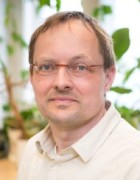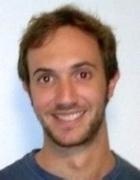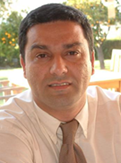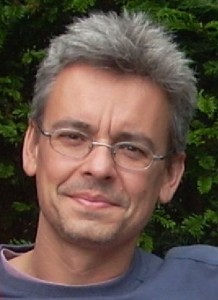Robótica Colaborativa
(13 de Junio de 2019)
Planificación
El jueves 13 de Junio de 2019 a las 19:15 h., se impartirá el seminario «Robótica colaborativa«. En el mismo se desarrollarán las presentaciones:
- «Robótica colaborativa, enfoque para reducir el gap entre I+D e industria», Jordi Saboya (Universal Robots, UR+ Manager South Europe & MEA), Borja Coronado (CFZ Cobots, CEO).
- “Robótica Móvil Colaborativa: del I+D a la Industria 4.0”, Néstor Bolinches (Robotnik Automation SLL).
Robot Vision for the perception of objects
(14 de Junio de 2019)
Planificación
El viernes 14 de Junio de 2019 a las 09:30 h., se impartirá la conferencia «Robot Vision for the perception of objects» por el Dr. Markus Vincze, leader of the Vision for Robotics (V4R) team at the Technical University Wien (TUW) Austria. La conferencia tendrá lugar en el Salón de Actos de la Escuela Politécnica Superior de la Universidad de Alicante a las 09:30 horas. (Ver ubicación).
Abstract
In the near future robots will operate next to humans. Robots will be expected to know about all the objects in the domain where they are working. This will require methods to rapidly learn new objects, recognise and manipulate them. The talk will review recent advances such as learning objects from CAD models, learning object relations and parts, the use of semantic knowledge related to objects, and the detection of learned object classes from mobile robots.
Ponente invitado
 Markus Vincze received his diploma in mechanical engineering from Technical University Wien (TUW) in 1988 and a M.Sc. from Rensselaer Polytechnic Institute, USA, 1990. He finished his PhD at TUW in 1993. With a grant from the Austrian Academy of Sciences he worked at HelpMate Robotics Inc. and at the Vision Laboratory of Gregory Hager at Yale University. In 2004, he obtained his habilitation in robotics. Presently he leads the Vision for Robotics (V4R) team at TUW with the vision to make robots see. V4R regularly coordinates EU (e.g., ActIPret, robots@home, HOBBIT) and national research projects (e.g, vision@home) and contributes to research (e.g., CogX, STRANDS, Squirrel, ALOOF) and innovation projects (e.g., Redux, FloBot). With Gregory Hager he edited a book on Robust Vision for IEEE and is (co-)author of 58 peer reviewed journal articles and over 400 reviewed other publications. He was the program chair of ICRA 2013 in Karlsruhe and will organize HRI 2017 in Vienna. Markus’ special interests are cognitive computer vision techniques for robotics solutions situated in real-world environments and especially homes. Personal website: www.acin.tuwien.ac.at/staff/vm/
Markus Vincze received his diploma in mechanical engineering from Technical University Wien (TUW) in 1988 and a M.Sc. from Rensselaer Polytechnic Institute, USA, 1990. He finished his PhD at TUW in 1993. With a grant from the Austrian Academy of Sciences he worked at HelpMate Robotics Inc. and at the Vision Laboratory of Gregory Hager at Yale University. In 2004, he obtained his habilitation in robotics. Presently he leads the Vision for Robotics (V4R) team at TUW with the vision to make robots see. V4R regularly coordinates EU (e.g., ActIPret, robots@home, HOBBIT) and national research projects (e.g, vision@home) and contributes to research (e.g., CogX, STRANDS, Squirrel, ALOOF) and innovation projects (e.g., Redux, FloBot). With Gregory Hager he edited a book on Robust Vision for IEEE and is (co-)author of 58 peer reviewed journal articles and over 400 reviewed other publications. He was the program chair of ICRA 2013 in Karlsruhe and will organize HRI 2017 in Vienna. Markus’ special interests are cognitive computer vision techniques for robotics solutions situated in real-world environments and especially homes. Personal website: www.acin.tuwien.ac.at/staff/vm/Is this my body? Neuro-inspired Robotic Body Perception and Action
(13 de Junio de 2019)
Planificación
El jueves 13 de Junio de 2019 a las 18:15 h., se impartirá la conferencia «Is this my body? Neuro-inspired robotic body perception and action» por el Dr. Pablo Lanillos, Marie Sklodowska-Curie Fellow en el Institute of Cognitive Systems (ICS) directed by Prof. Gordon Cheng, at the Technical University of Munich (TUM, Germany). La conferencia tendrá lugar en el Salón de Actos de la Escuela Politécnica Superior de la Universidad de Alicante a las 18:15 horas. (Ver ubicación).
Abstract
Unlike robots, humans learn, adapt and perceive their body as a unity during interaction with the environment. To enable robots with the same functionalities in complex changing scenarios, perception and action should be revisited. In this talk, I will mathematically describe robotic body perception as a flexible process inspired by Predictive Coding, one of the most promising theories of the inner functioning of the brain. Perception and action becomes two sides of the same process: to continuously approximate reality with the generative models that have been learned by interaction. Basically, the perceived reality is adjusted by minimizing the error between the expected sensation and the observed one. Under the umbrella of the SELFCEPTION interdisciplinary project, where we are developing computational models for robotic self/other distinction in order to improve interaction under uncertainty, I will discuss the advantages and challenges of this approach through different tests with real humanoid robots with artificial skin, such as adaptive perception, robust reaching and self-recognition. Furthermore, I will portrait the future of neuro-inspired embodied Artificial Intelligence for improving robotics systems and for giving meaningful feedback to neuroscience and psychology..
Ponente invitado
 Pablo Lanillos has a M.Sc. degree in computer engineering and the Ph.D. degree in Artificial Intelligence and Robotics by the Complutense University of Madrid. He is currently a Marie Sklodowska-Curie Fellow leading his EU H2020 funded project SELFCEPTION, at the Institute of Cognitive Systems (ICS) directed by Prof. Gordon Cheng, at the Technical University of Munich (TUM, Germany). Before working in Germany, Lanillos worked in the last 10 years in the Massachusetts Institute of Technology (MIT), in the Polytechnic School of Lausanne, in the ACFR of Sydney University and the Institute for Systems and Robotics, Portugal. He has presented his line of research in several top journals and conferences, and recently, at the IROS2018 conference, his work was awarded as finalist of better cognitive robotics paper. Besides, he is the vice-president of the Society of Spanish Researchers (CERFA), in Germany. Interests: Embodied Artificial Intelligence, Bio-inspired Computational Modelling and Machine Learning, body perception and self/other distinction. Personal website: www.therobotdecision.com.
Pablo Lanillos has a M.Sc. degree in computer engineering and the Ph.D. degree in Artificial Intelligence and Robotics by the Complutense University of Madrid. He is currently a Marie Sklodowska-Curie Fellow leading his EU H2020 funded project SELFCEPTION, at the Institute of Cognitive Systems (ICS) directed by Prof. Gordon Cheng, at the Technical University of Munich (TUM, Germany). Before working in Germany, Lanillos worked in the last 10 years in the Massachusetts Institute of Technology (MIT), in the Polytechnic School of Lausanne, in the ACFR of Sydney University and the Institute for Systems and Robotics, Portugal. He has presented his line of research in several top journals and conferences, and recently, at the IROS2018 conference, his work was awarded as finalist of better cognitive robotics paper. Besides, he is the vice-president of the Society of Spanish Researchers (CERFA), in Germany. Interests: Embodied Artificial Intelligence, Bio-inspired Computational Modelling and Machine Learning, body perception and self/other distinction. Personal website: www.therobotdecision.com.
Swarm Robotics
(6 de Mayo de 2019)
Planificación
El lunes 6 de Mayo de 2019 a las 17:30 h., se impartirá la conferencia «Swarm Roboticis» por el Dr. Nuno Ferrerira, Assistant Professor at the Department of Electrical Engineering (DEE) of the Institute of Engineering of Coimbra (ISEC). La conferencia tendrá lugar en el Salón de Grados del edificio INNOVA a las 17:30 h.
Abstract
Swarm robotics plays an important role in the advances on collective and cooperative artificial intelligence. The idea of emulating social behavior of different organisms, defines the basis of success for swarm robotics. Robots swarm coordinately as an only system, by behaving as a large number of relatively simple robots in a decentralized manner. In this context, the applications of autonomous robots are numerous: rescue, precision agriculture, chain management, military, recognition, etc. The scope of this seminar will concentrate on a general introduction to research in swarm robotics, and its field of application.
Ponente invitado
 Nuno M. Fonseca Ferreira is an Assistant Professor at the Department of Electrical Engineering (DEE) of the Institute of Engineering of Coimbra (ISEC). He is a Permanent Researcher, in the Knowledge Research Group on Intelligent Engineering and Computing for Advanced Innovation and Development (GECAD) team of the Engineering Institute of Porto (ISEP). He collaborates with the Centre of Robotics in Industry and Intelligent Systems (CRIIS) team of INESC TEC – Institute for Systems and Computer Engineering, Technology and Science and with the team of the Laboratory of Artificial Intelligence and Computer Science (LIACC).
Nuno M. Fonseca Ferreira is an Assistant Professor at the Department of Electrical Engineering (DEE) of the Institute of Engineering of Coimbra (ISEC). He is a Permanent Researcher, in the Knowledge Research Group on Intelligent Engineering and Computing for Advanced Innovation and Development (GECAD) team of the Engineering Institute of Porto (ISEP). He collaborates with the Centre of Robotics in Industry and Intelligent Systems (CRIIS) team of INESC TEC – Institute for Systems and Computer Engineering, Technology and Science and with the team of the Laboratory of Artificial Intelligence and Computer Science (LIACC).
He received the Engineering degree, the M.Sc. degree, and the Ph.D. degree in Electrical and Computer Engineering from the Faculty of Engineering of the University of Porto and the University of Trás-dos-Montes e Alto Douro, in 1996, 1999 and 2006, respectively. His main research area is robotics and his main research interests are industrial robots, cooperative robots, multi-robot systems, human-robot team cooperation, distributed control, cooperative perception and autonomous robots.
He is the co-author of about 38 scientific publications in ISI-indexed scientific journals, and 56 documents listed in Scopus, from articles, book chapters, and proceedings of peer-reviewed international scientific conferences. He began his career as an electrical engineer in Siemens Company, where he worked between 1996 and 1997. Afterwards he joined the DEE of ISEC. He exercised Public Management and Administrative Activities such as: Vice-President of the Polytechnic Institute of Coimbra, (IPC) (2013-2017); President of the ISEC (2010-2013); Pro-President for Research at IPC (2009- 2010); Member of the General Council of IPC (2009 to 2017) and Vice-President of the ISEC (2003 to 2005).
Inteligencia artificial en tareas de búsqueda y optimización compleja: Aplicaciones en diseño de transductores y solución del problema inverso en caracterización de materiales
(26 de Octubre de 2018)
Planificación
El viernes 26 de Octubre de 2018 a las 15:00 h., se impartirá la conferencia «Inteligencia artificial en tareas de búsqueda y optimización compleja: Aplicaciones en diseño de transductores y solución al problema inverso en caracterización de materiales» por el Dr. Tomás Gómez Alvarez Arenas, jefe del Dpto. de Sensores y Sistemas Ultrasónicos del Consejo Superior de Investigaciones Científicas (CSIC). La conferencia tendrá lugar en el aula 2.3 del edificio Altet a las 15:00h
Abstract
La inteligencia artificial parece haber conseguido el grado de madurez que durante tanto tiempo había reclamado y está consiguiendo importantes logros en muy diferentes campos. Una de las ramas de la inteligencia artificial, con especial protagonismo en este éxito, se refiere a los algoritmos inteligentes (metaheuristicos). En este seminario se revisa el concepto de algoritmos inteligentes y sus principales características y se describen las principales estrategias de desarrollo de estos algoritmos, las principales implementaciones y líneas de investigación. Una de las ventajas de estos algoritmos es su capacidad para tratar con problemas “complejos”.
El seminario aborda el problema de la optimización compleja, donde el nivel de complejidad es tal que el uso de algoritmos convencionales no es posible. Se presenta, de forma sucinta, una formulación general del problema de la optimización si bien discreta o continua; abordando someramente la teoría de la complejidad y describiendo los elementos que la originan: dimensionalidad del espacio de búsqueda, restricciones a la solución, multiplicidad en la función objetivo, etc.
Finalmente se muestran aplicaciones en dos campos donde el concurso de este tipo de algoritmos es esencial para el éxito de la tarea: la optimización de transductores piezoeléctricos ultrasónicos y, la caracterización ultrasónica de materiales por técnicas de espectroscopía.
Ponente invitado

Dr. D. Tomás E. Gómez Álvarez-Arenas Doctor en CC. Físicas por la Universidad Complutense de Madrid. En la actualidad Científico Titular y Jefe del Departamento de Sensores y Sistemas Ultrasónicos en el Instituto de Tecnologías Físicas y de la Información del Consejo Superior de Investigaciones Científicas (CSIC). Previamente ha trabajado en el Centre for Ultrasonic Engineering de la University of Strathclyde (Glasgow, UK), en el Instituto de Acústica (CSIC) y en el Instituto de Seguridad de la Información (CSIC). Más información en: www.us-biomat.com/group/tomas-ga/
